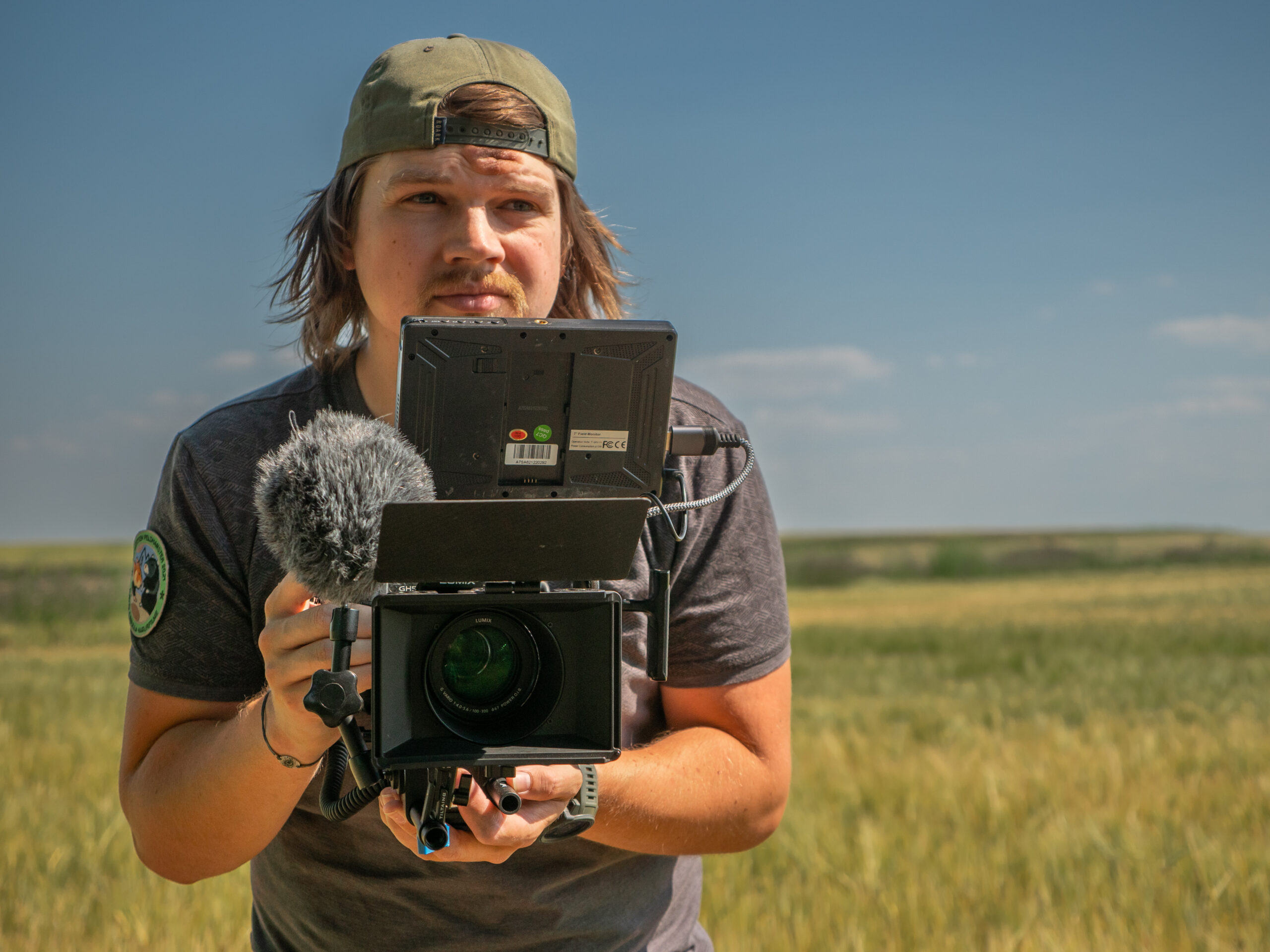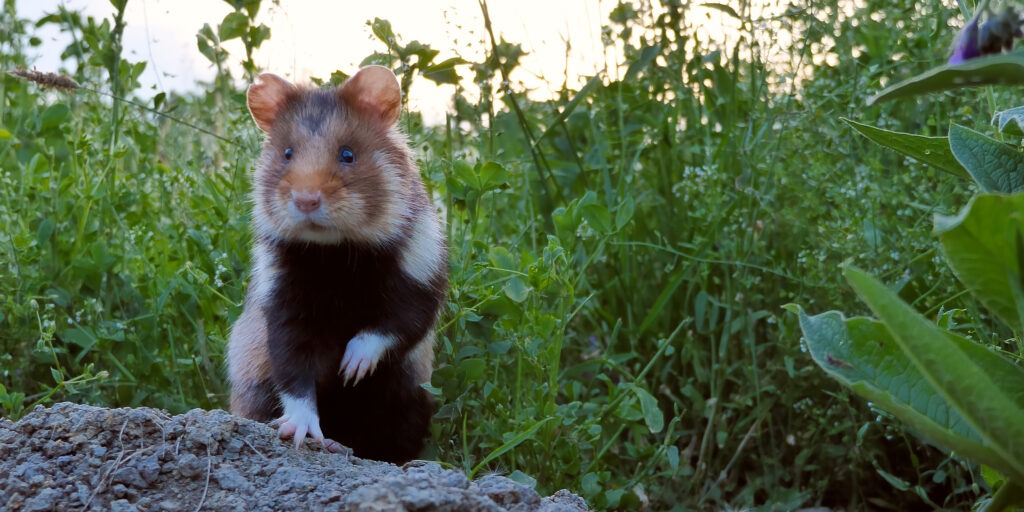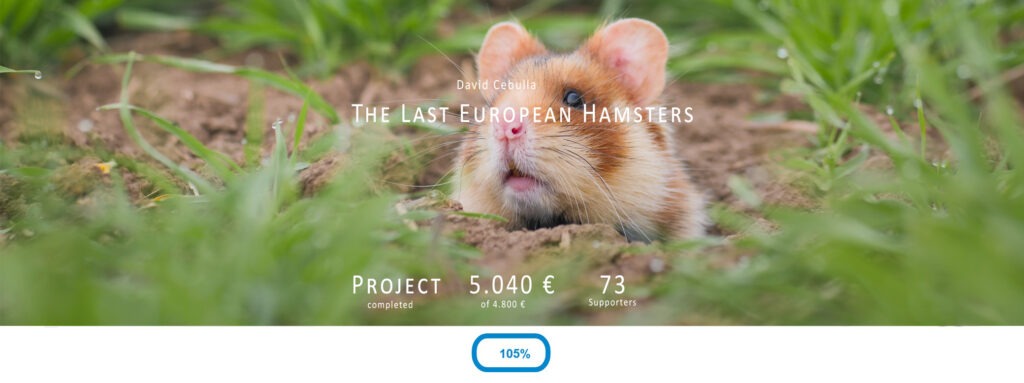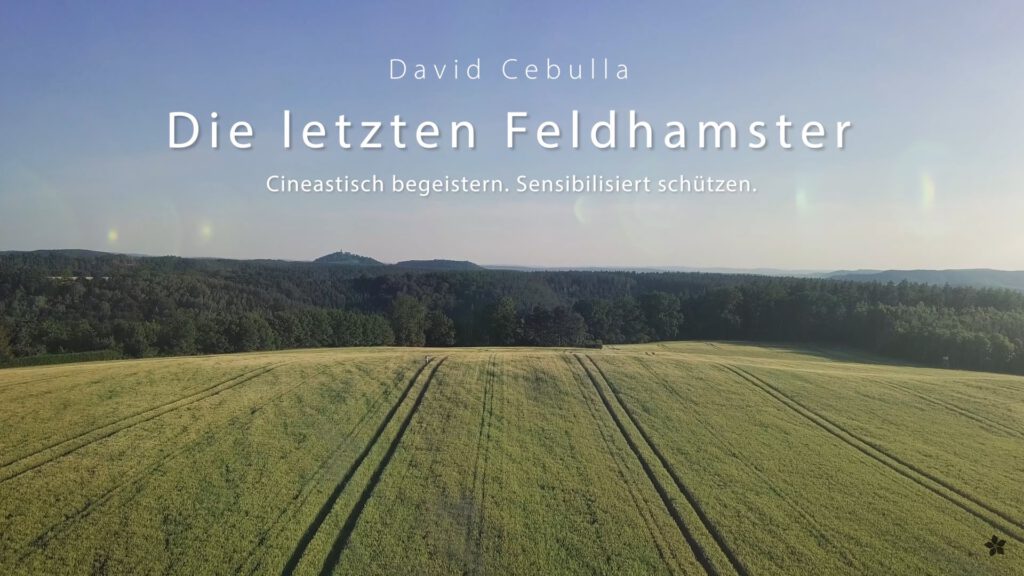Wild common hamster in front of the camera
With harvest in the fall of 2022, the European hamsters also go into hibernation. This also means the end of filming for our documentary “The Last Common Hamsters”. Nature filmmaker and ecologist David Cebulla filmed Common hamsters over two years. What makes this film special are the protagonists and filming locations: David Cebulla did not film breeded animals in a replicated studio burrow, but wild animals on actual farmland. In the process, he was able to document unique behavior such as the digging of hamster burrows and a mating outside the burrow.
David Cebulla shows how complex the subject is by portraying some of the last populations of the species, which is threatened with extinction worldwide. To do so, he traveled to France, Austria, Poland, Hungary and Kazakhstan. With his work, the nature filmmaker wants to inspire enthusiasm for the animals in need of protection and raise awareness for their threat in modern agriculture. Thuringia is particularly interesting for the filmmaker here. This is the only place in Central Europe where the rare black field hamster still occurs.
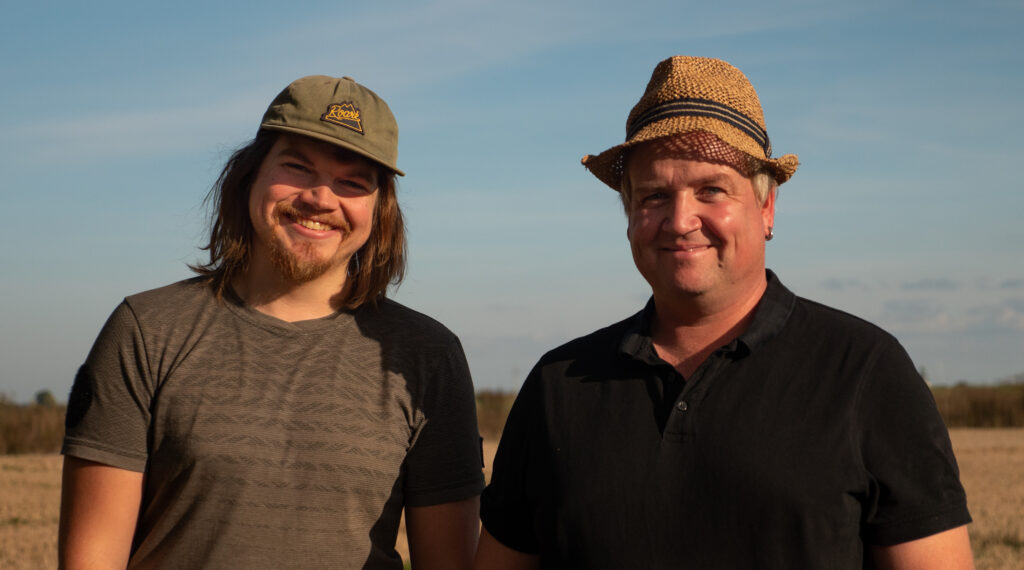
Common hamster protection on the field and the screen
Important for Cebulla’s project was the cooperation with partners in field hamster protection and agriculture. In Thuringia, the Stiftung Lebensraum e.V. oversees an important hamster protection project. This includes the Common hamster protection on fields of René Döring and Geratal Agrar, where David Cebulla filmed Common hamsters. The commitment is a personal concern for the crop production manager René Döring: “With the protection measures for the European hamster, I would like to make my contribution for the hamster in my generation”. The protected areas are cultivated on a smaller scale than conventionally farmed plots, and the stubble is left until the end of September. They provide not only food and cover for the European hamster, but are an important refuge for many open land species. The flowering strips also provide pollen and nectar for insects.
The documentary “The Last Common Hamsters” shows natural behavior and addresses why the species is endangered and how it can be protected.
